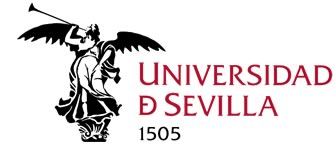Proyecto I+D+i
Campo de Fases y Aplicaciones; Multifluidos, Solidificación y Tumores
Responsable: Francisco Guillén González
Tipo de Proyecto/Ayuda: Plan Nacional del 2012
Referencia: MTM2012-32325
Fecha de Inicio: 01-01-2013
Fecha de Finalización: 31-12-2015
Empresa/Organismo financiador/es:
- Ministerio de Economía y Competitividad
Equipo:
- Investigadores:
- Didier Bresch
- Carlos Cabrales Roberto
- Blanca Climent Ezquerra
- Juan Vicente Gutiérrez Santacreu
- María Victoria Redondo Neble
- María Ángeles Rodríguez Bellido
- José Rafael Rodríguez Galván (alta: 06/06/2014)
- Marko Antonio Rojas Medar
- Giordano Tierra Chica
Resumen del proyecto:
Interface-diffuse Phase-Fields (PF) models appear as an approximation/regularization of the macroscopic free-interface models (sharp-interface models), assuming that interfaces have a non-zero width (normally small) a mesoscopic scale. In addition, PF are thermodinamically consistent models depending on a dissipative free-energy (without considering external sources).
CF models are also very interesting from the (analytical and numerical) mathematical point of view, because they couple different difficulties as: the competition between concav-convex potentials, the influence of different scales (in time and space), the maximum principle for the phase-field variables, the rich behaviour at infinity time due to the existence of “continuous” equilibrium states, etc.
Modeling, theoretical and numerical analysis of PF models is a topic of emerging research with very different applications.
Among the many applications that can be modeled by PF, we are focusing in three: mixture of inmiscible fluids or multifluids, solidification and tumors. In fact, PF models were introduced in the Materials Science (multifluids, solidification), and very recently they are also been considered in Biomathematics, for instance in tumors models.
Consequently, the general objective of this project is the study of some PF models related to multifluids, solidification and tumors, focusing several aspects as: Modelization in solidification (considering convection in non-solid parts, anisotropic growth of interfases and alloys of components with different properties: meeting time, viscosity, termal conductivity, etc, and convergence of PF models towards sharp-interface models, as the interface width goes to zero), Theoretical Analysis (existence, uniqueness, regularity, asymptotic behavior in time, etc..), Numerical Analysis (design of numerical schemes, energetic-stability, convergence towards weak solutions, error estimates, long-time convergence, etc.) and effective implementation (using conventional software but with specific inputs, sensitivity to parameters, effective comparative of various schemes, etc.).


